Buongiorno! Sono Akio Lorenzo Oya, un giornalista residente in Italia.
In 2024, Japan’s automotive industry concluded the year with a major announcement: “Nissan, Honda, and Mitsubishi have begun discussions on a management integration.”
With this backdrop, I’d like to introduce a remarkable car that boasted an outstanding design but was swept up in the turbulent waves of corporate restructuring.


It was more captivating than a supercar
I apologize for starting with a personal reflection, but growing up in Tokyo during the late 1970s, books like “World Car Encyclopedias” were far more captivating to me than any school textbook. Among the many vehicles featured, there was one in particular that stood out to me. Unlike many other kids of my generation, I wasn’t fascinated by supercars, so it wasn’t a Ferrari or Maserati. Instead, it was the “SEAT Sport,” a car produced by Spain’s SEAT, which was under Fiat’s umbrella at the time.
The distinctive black front, the compact yet dynamic tumblehome shape emphasized by a bold character line, and the sharply sculpted rear end captured my imagination completely.
SEAT as a brand briefly appeared in Japan in the mid-1980s when the first-generation “Ibiza” was parallel-imported. However, there were no official imports before or after that period. As a result, I never had the chance to see the SEAT Sport in person.
A complete turnaround from the canceled plan: switching to a different manufacturer.
The SEAT Sport was a car with a fascinatingly unusual fate. From the very beginning, it wasn’t truly a “SEAT.” The design was based on the “Nergal,” a prototype exhibited at the 1970 Turin Motor Show by the Italian branch of Glasurit, a car paint brand under BASF.
The Nergal was a 2+2 coupe, and its mechanical components were borrowed from the “Prinz 1200 TT,” a rear-engine car from the German automobile brand NSU, which traced its roots back to the pre-World War II era.
The design of the Nergal, on the other hand, was created by Italian designer Aldo Sessano. Sessano studied architecture at the Polytechnic University of Turin and began his career in 1954 as a graphic designer at Fiat. From 1956 to 1968, he served as the Chief Designer at Fiat’s Centro Stile.
After going independent, Sessano became known for his consultancy work with Mitsubishi Motors during the 1970s and 1980s. He contributed to the design and development of models such as the 1979 “Lancer EX” and the 1983 concept car “Starwind.”
At one point, the Nergal was considered for mass production by NSU. However, NSU’s financial situation deteriorated rapidly. The company’s ambitious rotary engine vehicles proved to have poor reliability, which shook its foundations.
As a result, in 1969, NSU was forced to merge with another German automaker, Auto Union, under the Volkswagen (VW) Group. This chain of events led to the cancellation of the Nergal’s mass production plans.
The person who recognized the potential in this situation was Antoni Amat. He was the Technical Director at “Inducar,” a Spanish body manufacturing company and supplier to SEAT. Amat invited Sessano to Spain and began a new car development project for SEAT based on the Nergal’s design.
Initially, the powertrain was to follow the Nergal’s rear-engine layout, and the SEAT “850 Coupe” (the Spanish version of the Fiat 850) was considered as the basis. However, with the 1971 release of Fiat’s “127” and the decision to produce its SEAT version, the plan pivoted 180° to adopt a front-wheel-drive system using the 127’s mechanics.
That said, the engine was selected from the SEAT “124” (the Spanish version of the Fiat 124), which featured a more powerful 1.2-liter rear-wheel-drive engine, mounted at an incline to fit the new configuration.
Regarding the exterior design, the retractable headlights proposed for the Nergal were abandoned due to cost constraints. Instead, Sessano incorporated the black front mask design he had experimented with on other concept cars. This feature later earned the car its nickname, “Bocanegra” (Spanish for “black mouth”), following its release.
The Sport 1200, developed in this manner, became the first original model in SEAT’s history that did not exist within its parent company Fiat. It rolled off the production line in 1975.
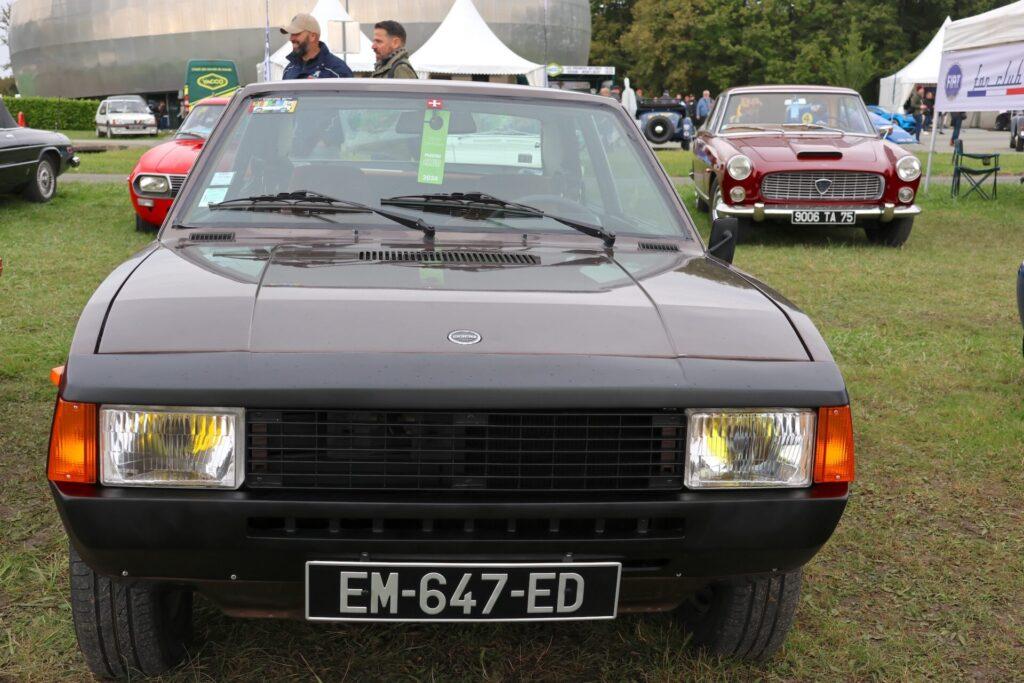
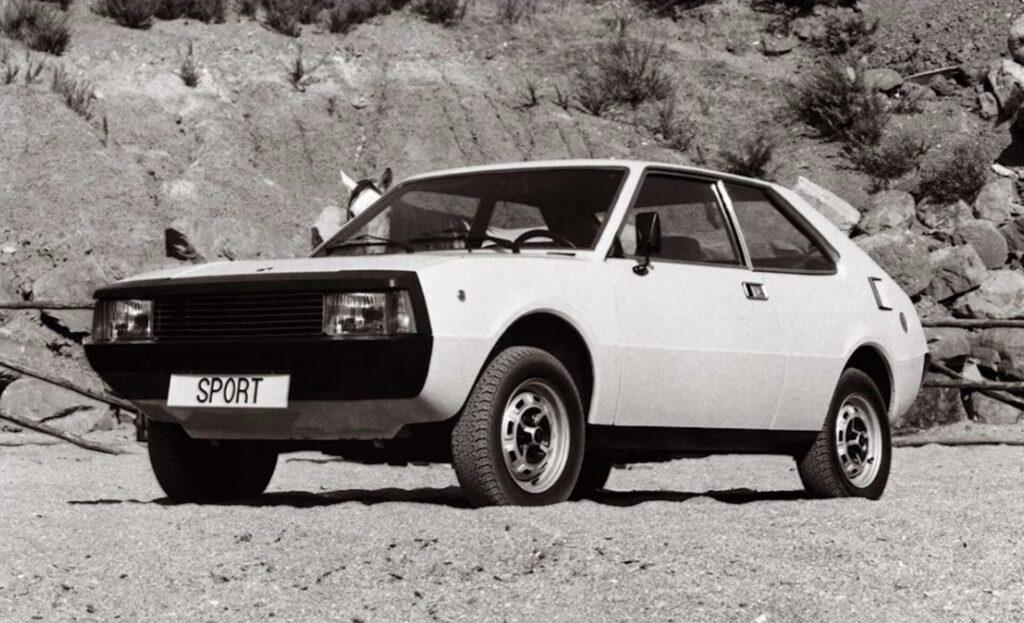
Under the care of passionate enthusiasts.
It was in October 2024 that I finally encountered the actual SEAT Sport, the car of my childhood dreams. This happened at the centennial celebration event held at the Linas-Montlhéry Circuit in the suburbs of Paris. There it stood unassumingly in a corner dedicated to make-specific clubs, amidst a gathering of Italian car enthusiasts.
The owner, Joël Lansal, was born in 1950. He says he accidentally discovered the existence of the SEAT Sport and, as he learned about its unusual and fascinating origins, he became completely captivated. In his garage, in addition to the brown SEAT Sport he brought to the event, he also owns two other cars: one in peppermint green and another in white. His passion is unmistakable. In October 2023, he naturally participated in the first-ever fan meeting held in Terrassa, Barcelona Province, a location closely tied to Inducar.
I immediately took the opportunity to admire the car in person. Its elegant and clean exterior was just as I had imagined it to be. The interplay of reflections on the surfaces, particularly where the front hood curves at its tip, was far more striking than any photograph could capture. The iconic “black mouth” design also evoked memories of the Experimental Safety Vehicles (ESVs) developed by various automakers in the early 1970s, during the heightened focus on automobile safety. These experimental vehicles often featured prominent bumpers designed to enhance safety.

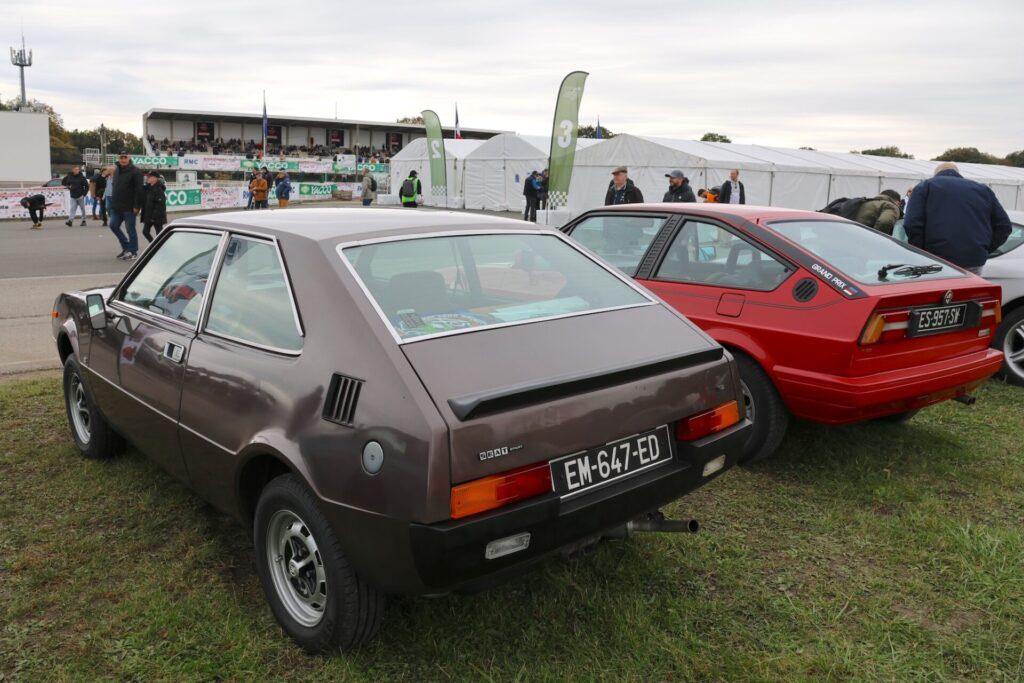

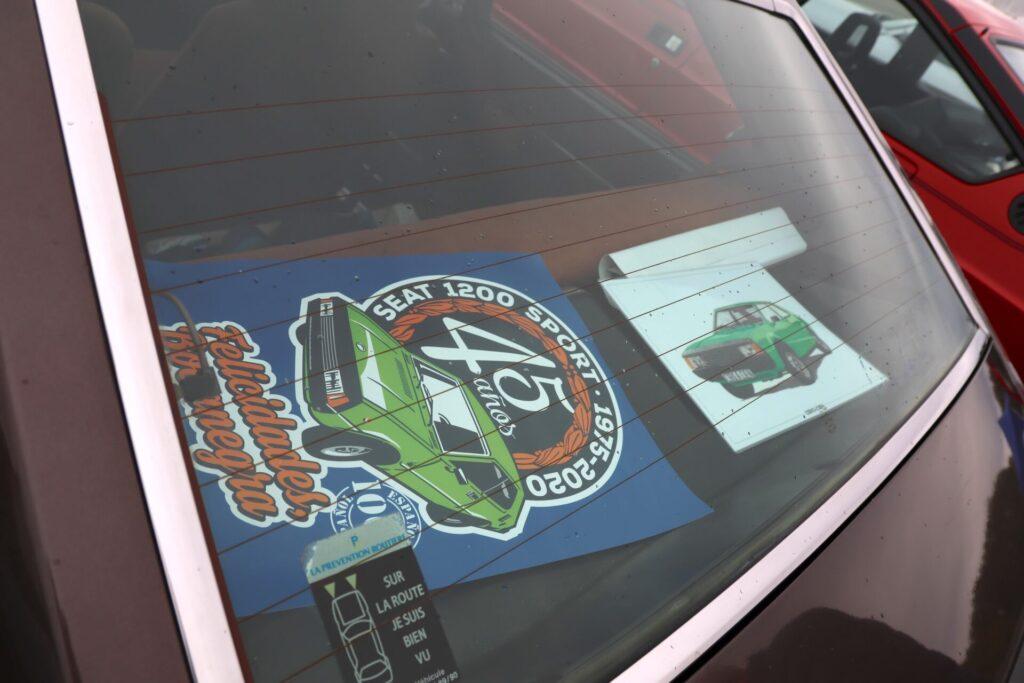

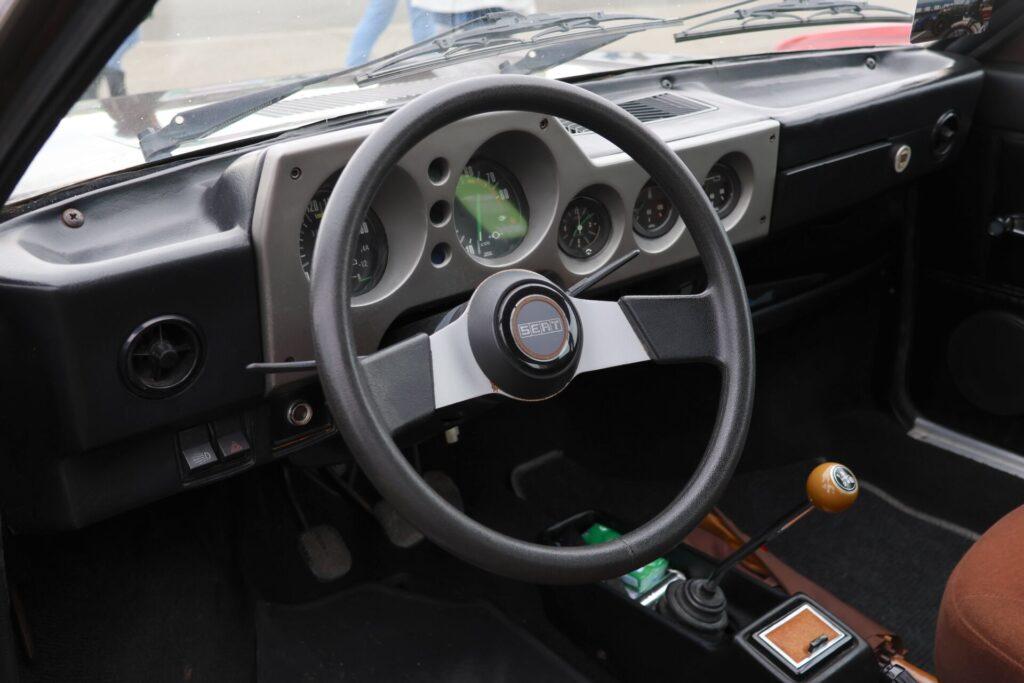

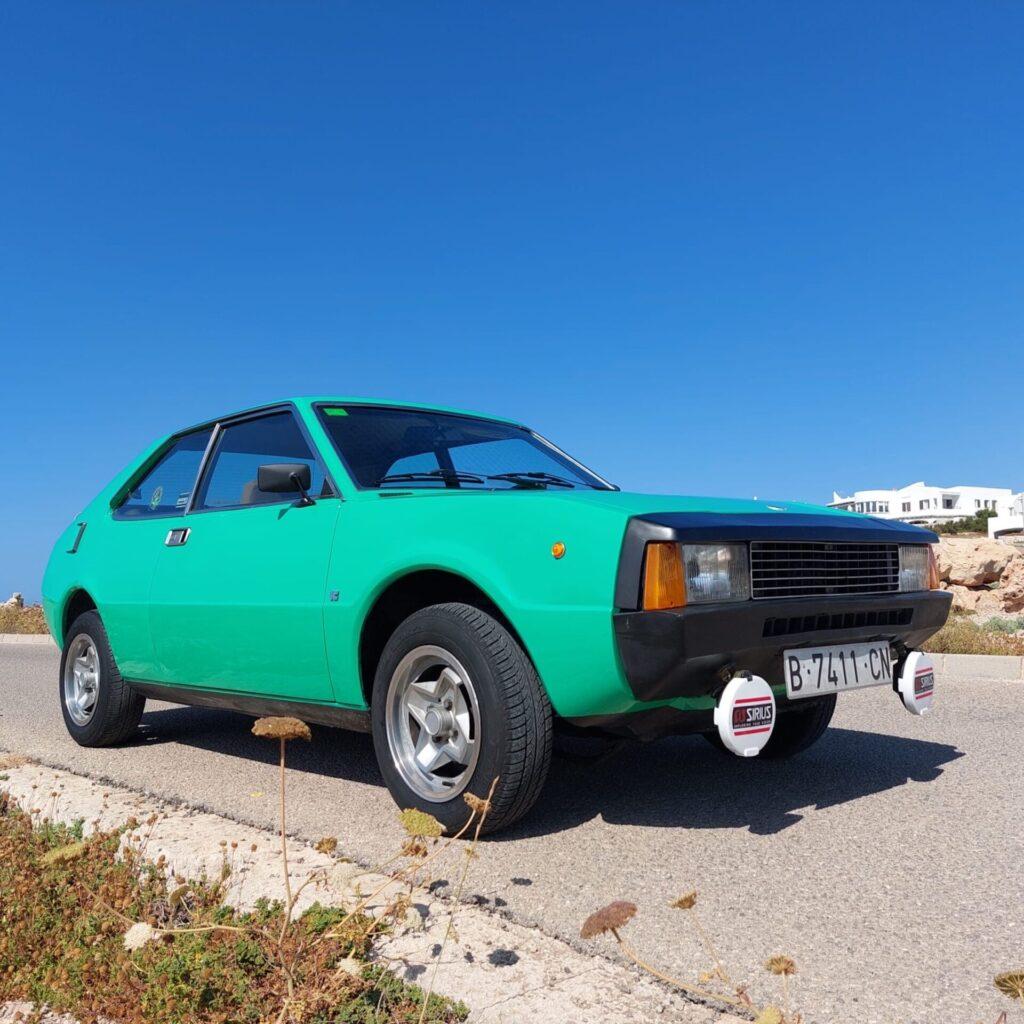
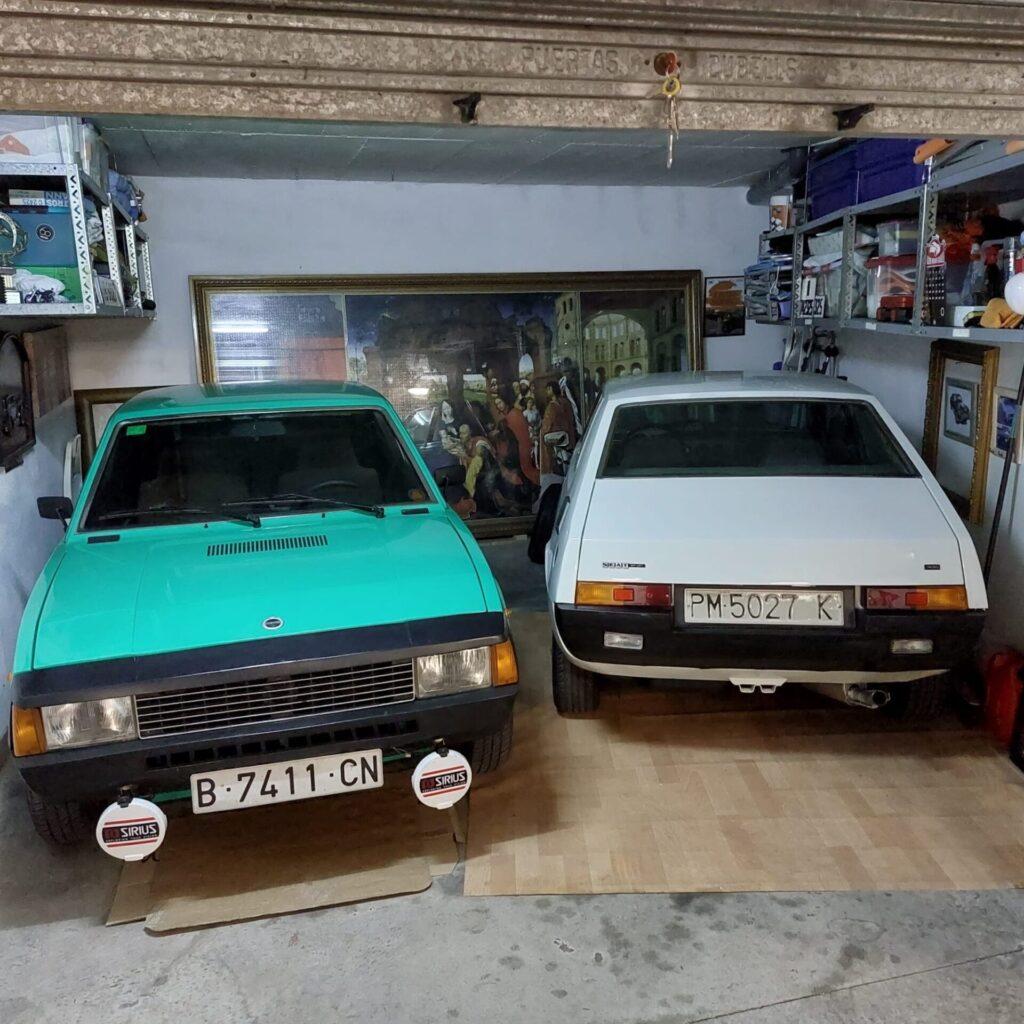
It might have become the “Scirocco” of Spain.
However, much like the real-life figure who inspired Giuseppe Verdi’s opera *Simon Boccanegra* and met a tragic end, SEAT’s Bocanegra was also far from fortunate. While records show that the last unit rolled off the production line in 1981, true mass production effectively ended in 1979. Excluding the launch year, this amounts to a mere four years of production. Joël explained, “Even when combining the 1200 and the later 1430 models, the total production only reached 19,332 units.”
The first reason, in my view, is its dependence on Fiat’s mechanical components, which lacked innovation. In fact, issues such as mediocre fuel efficiency and insufficient power reportedly hindered its sales. Even with outstanding design, its reliance on existing model components limited its popularity, bringing to mind a similar case: the Isuzu Piazza.
The second reason, as pointed out by various sources, lies in the lack of a clear mid-term plan for product lineups between Fiat and SEAT. Just two years after the production of the Sport began, SEAT introduced the “SEAT 128” in 1977. This model combined Fiat 128’s mechanics with a body designed by Fiat’s Centro Stile in Turin, featuring a 3-door hatchback layout. While stylish, the Sport was a 2-door coupe, making the SEAT 128 a more practical and marketable option.
The third reason is related to Fiat’s sales strategy. The Sport was exported to only a handful of European countries, such as France and the Netherlands, with no major push for broader distribution. It was notably absent from the Italian market, likely because Fiat’s headquarters in Turin wanted to avoid competition with its own models. In an era when attractive coupes were enjoying widespread popularity, it raises the question: could the Sport have achieved more with better strategy? With sufficient market direction and support, it might have gained attention similar to that of the first-generation Volkswagen Scirocco, launched in 1979.
Even if a model boasts outstanding design, it can sometimes fade into obscurity for various reasons. I intend to continue spotlighting such short-lived yet beautiful cars in the future.
Until next time, arrivederci! (Take care!)
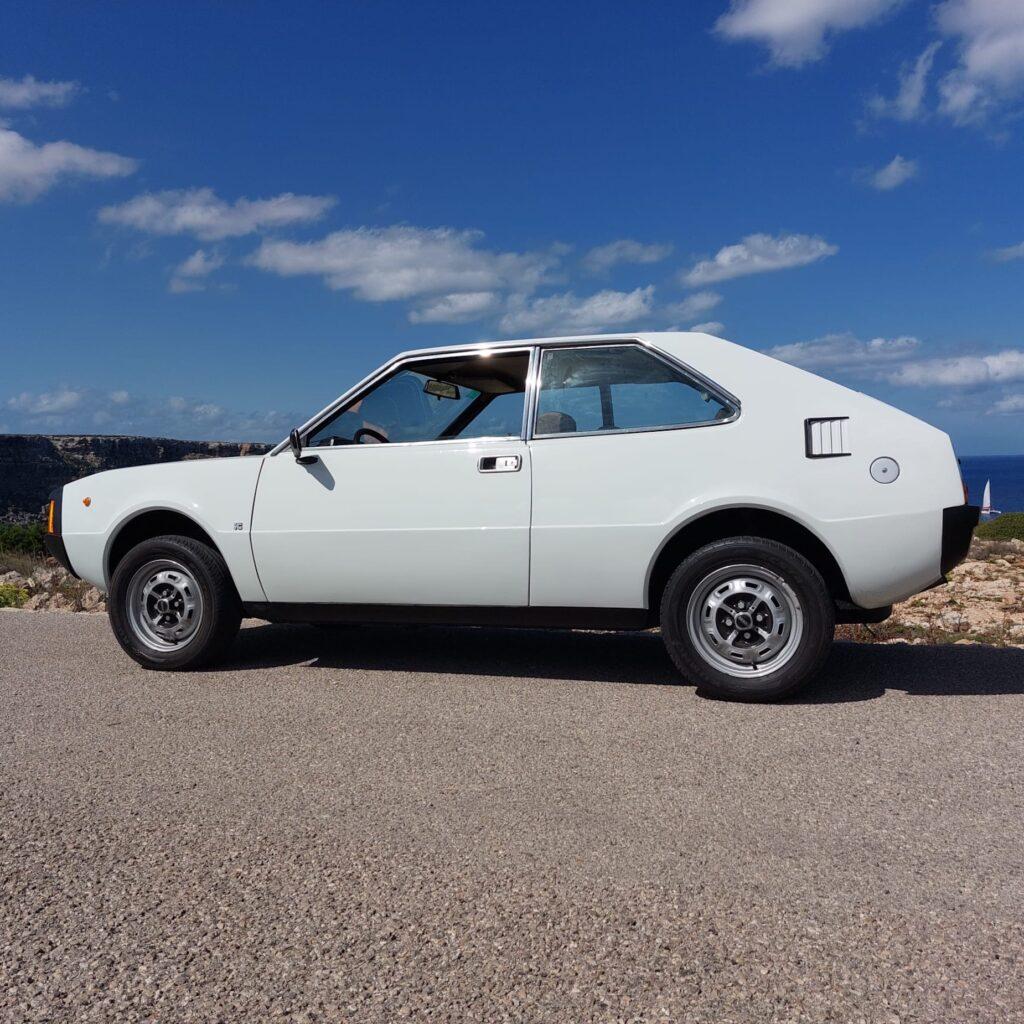
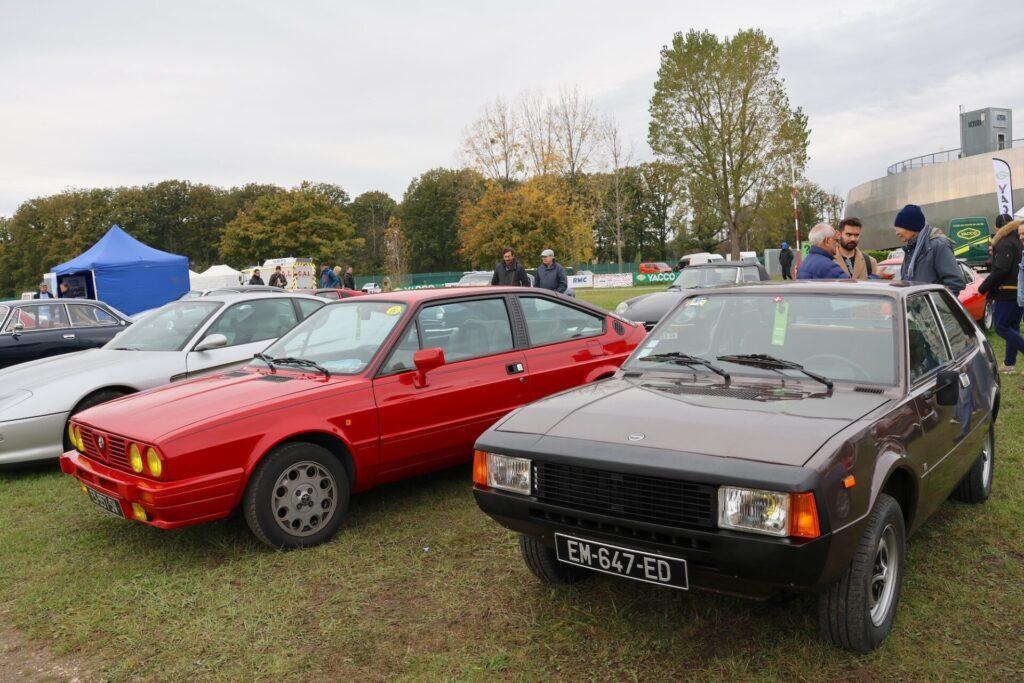

![by Car Styling [カースタイリング]](https://motor-fan.jp/wp-content/uploads/2025/04/carstyling-jp_logo.png)






